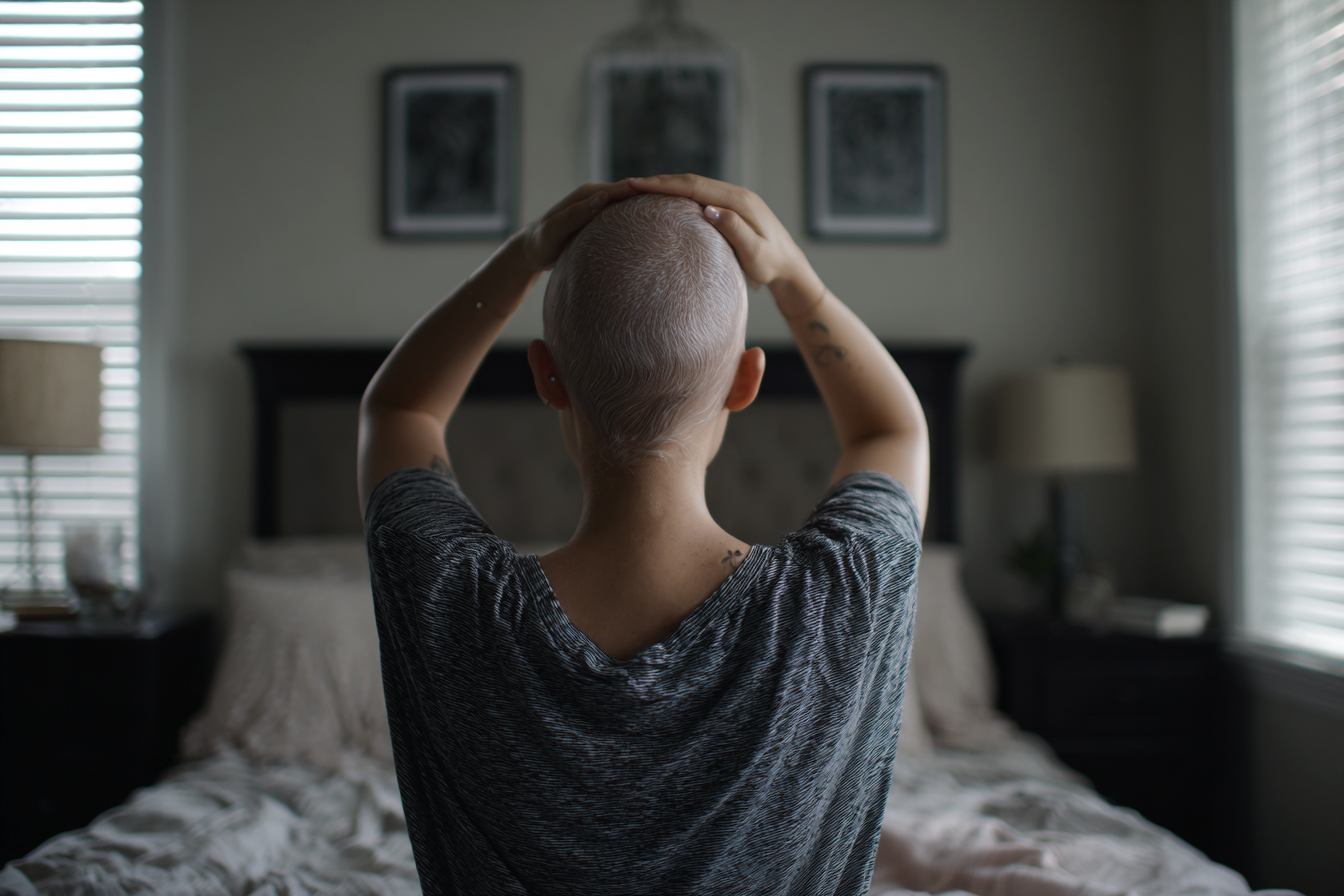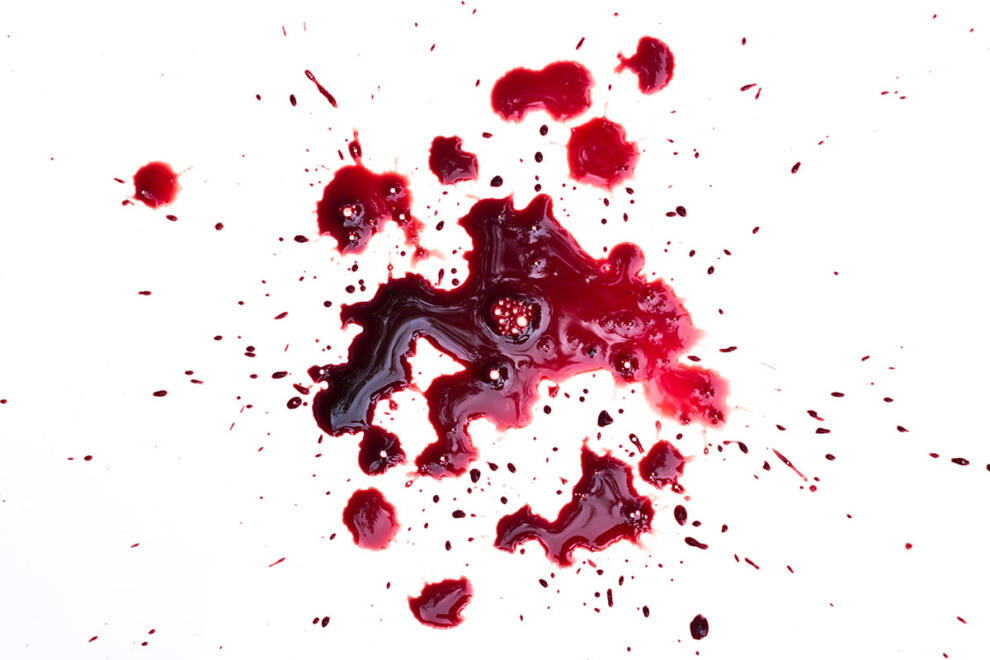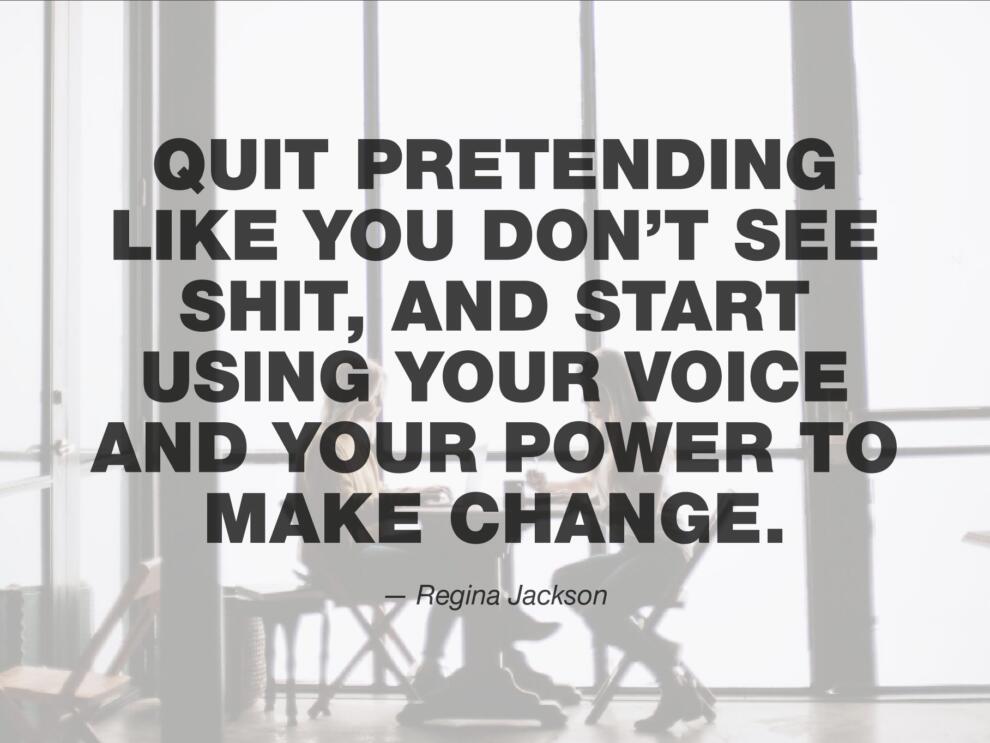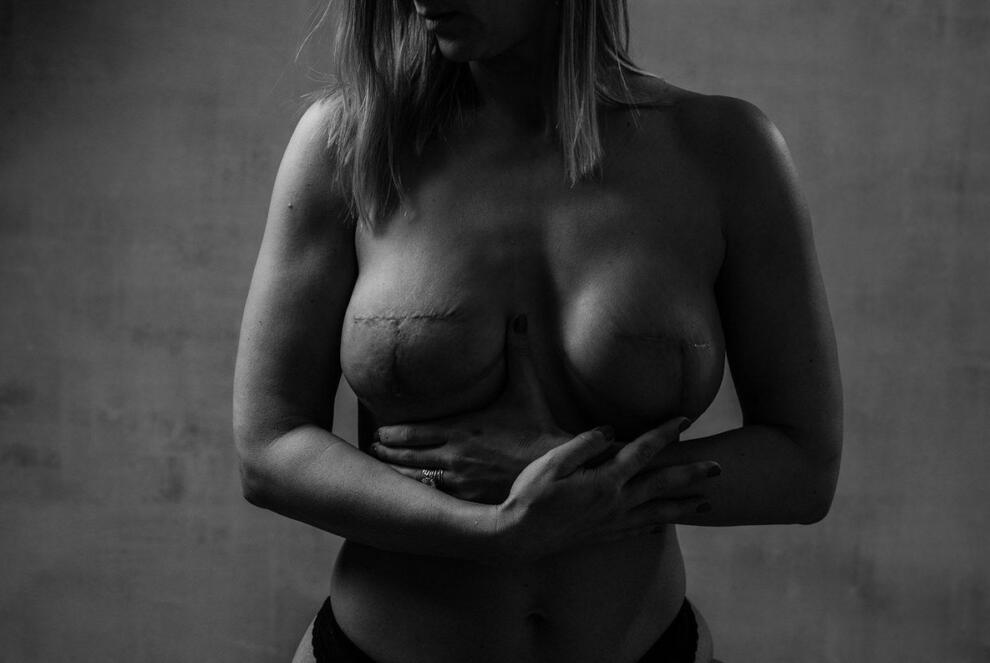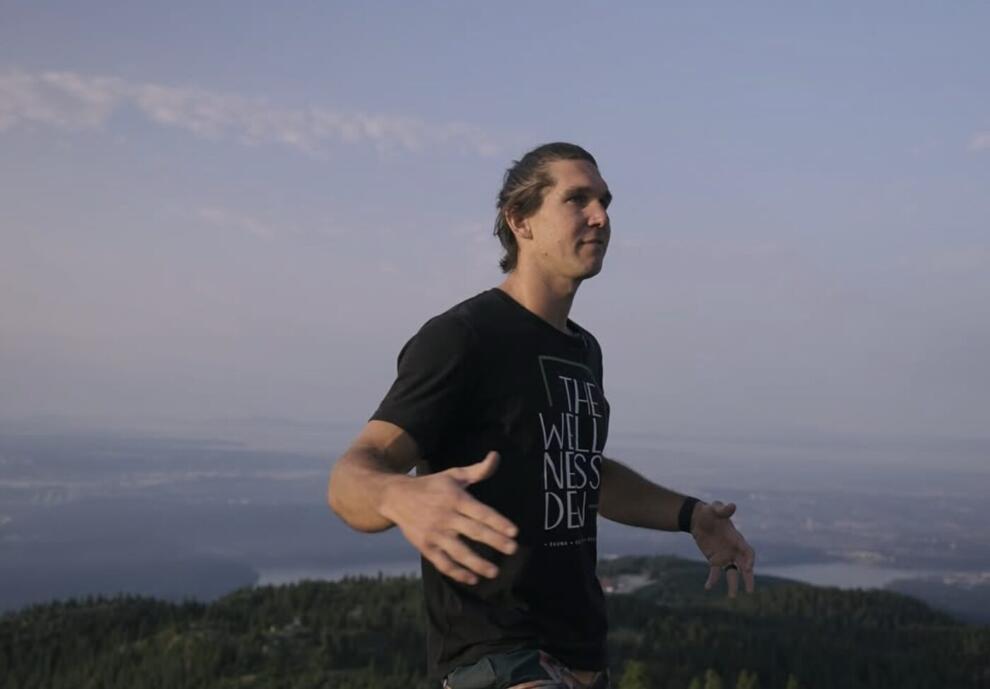What We Lose, What We Find : One Woman’s Journey Through Hair Loss & Healing
Q&A with Tami Wong
There’s a paradox in modern beauty culture. On one hand, we’re seeing more representation—people like Nikki Lilly walking Paris Fashion Week and Lily D. Moore starring in Never Have I Ever are helping expand the definition of beauty. On the other hand, it’s never been easier to edit a photo beyond recognition. Between filters, algorithms, and unrealistic standards, the pressure to look a certain way has gone from TV screens and magazines to the palm of our hands.
Social media plays a major role in how young people see themselves. According to the Mental Health Foundation, 46% of girls (ages 13-19) say their body image causes them to worry “often” or “always,” compared to 25% of boys. For women experiencing hair loss, that pressure can feel even more isolating.
Tami Wong, Founder of Hair Loss Pride, knows that feeling firsthand. As a wig expert and alopecia advocate, she’s helping women feel seen and supported through coaching, community, and conversation. In this Q&A, she shares her journey with hair loss, how she reclaimed her sense of self, her definition of beauty and what she’s doing to bring visibility to others navigating the same path.
Q : You’ve shared that losing your hair as a teenager was isolating—what did that experience teach you about yourself?
A : Losing my hair as a teenager taught me how deeply we all need connection and belonging. I didn’t talk about it with anyone for over a decade, and because of that, it took me so long to heal and accept myself. I felt intense shame and loneliness during those years and like I lost 17 years of my life hiding from something I couldn’t change.
Even though I isolated myself, I learned how resilient and strong I was, even at a young age. It gave me a deep sense of empathy and desire to help others, which I’m really grateful for. What I’ve learned since then is that vulnerability is powerful. Talking to someone you trust and letting yourself be seen is one of the best ways to take your power back. Community and connection are everything when you’re going through something that makes you feel different. You can’t heal in isolation- you heal in safe spaces where you’re understood and supported.
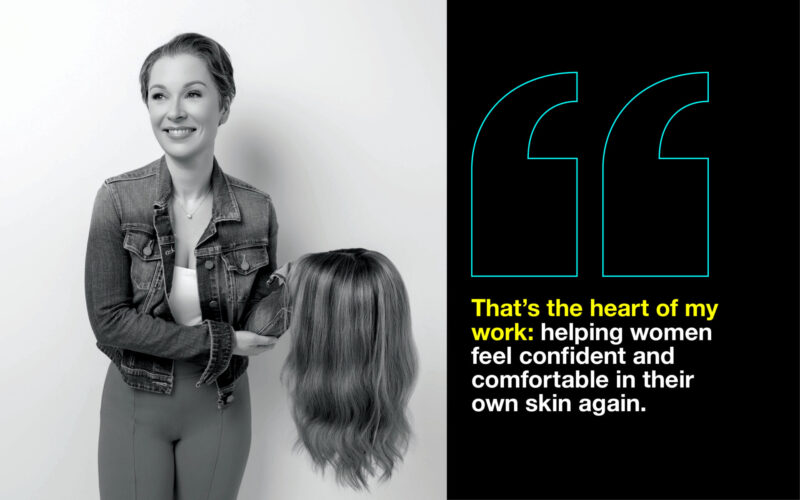
Q : Was there a turning point when you stopped hiding and started embracing your journey?
A : I opened up to my best friend and husband in my late 20s, and their support gave me the courage to be more honest about my hair loss.
The real turning point came when I started wearing wigs around age 33. For over 10 years, I’d spent years trying to hide my thinning hair with fibers and strategic hairstyles, constantly worrying someone would notice a bald spot. Wigs changed everything. I stopped obsessing over what I’d lost and started having fun with hair again. People often complimented my “hair,” and I loved using that moment to tell them it was actually a wig. It always sparked bigger conversations about female hair loss and helped normalize it.
Sharing publicly came much later, when I started my Instagram account about two years ago. I never imagined I’d show myself without a wig, but now I do it all the time. It’s been incredibly healing and has connected me with the most amazing women in the alopecia community.
Q : You’ve said hair loss isn’t “just cosmetic.” What are some of the unseen emotional layers that people outside the community often miss?
A : For women, hair is deeply tied to identity, femininity, and how we show up in the world. From a young age, we’re surrounded by images of women with thick, glossy hair- it’s constantly reinforced as the standard of beauty. When your hair doesn’t fit that ideal, it can feel like something’s wrong with you. What most people don’t realize is that even those images we’re trying to live up to often feature wigs or extensions.
Hair loss isn’t just physical, it’s emotional. It can trigger grief, anxiety, and depression. You’re essentially mourning the loss of a part of yourself. I avoided so many things I loved: swimming, camping, even overnight trips, because I was scared someone would notice my bald spots. It’s an invisible burden that affects how you see yourself and how you move through the world.
Q : Many women still feel they’re the “only one” going through this. How do you work to break that silence and sense of isolation?
A : I talk about hair loss everywhere: on social media, in interviews, and in everyday life. My goal is to normalize these conversations so women know they’re not alone. I’ve gone on local news and podcasts to raise awareness. I share openly with people who don’t have hair loss too, because chances are, they know someone who does. The more we talk about it, the more we break the silence and decrease the stigma. In my coaching calls, I share statistics on female hair loss and real life examples of celebrities or other notable figures who have hair loss and how many women in the media wear alternative hair. My clients are often shocked by how common it is once we really dig into it.
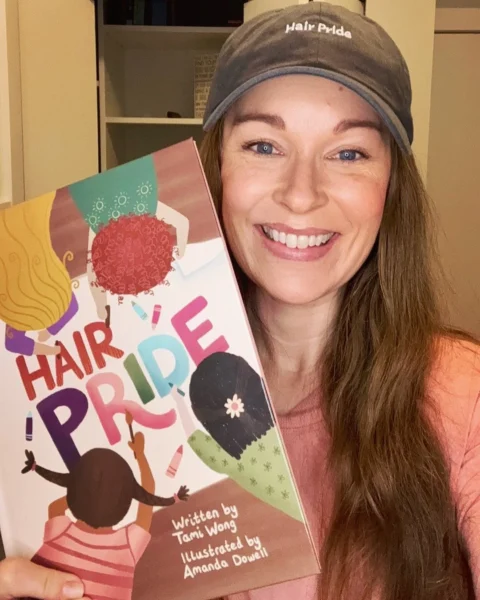
Q : Your children’s book Hair Pride came out of your own journey. What do you hope it gives to a child who might pick it up?
A : I originally wrote Hair Pride for my daughters. They’ve grown up seeing me wear wigs, so to them, it’s normal. I wanted them to know they’re beautiful exactly as they are, and that beauty doesn’t depend on hair. Publishing the book was my way of extending that message to other kids: that it’s okay to look different, that kindness matters more than appearance, and that every child deserves to feel seen and accepted. I hope a child with alopecia picks it up and thinks, “That looks like me, and I belong.”
Q : Can you share a story of someone whose life shifted after finding your community or support?
A : One of my most memorable clients had alopecia universalis for over 20 years. She’d been wearing an ill-fitting wig that never felt right, and you could see how disconnected she felt from herself. During our consultation, I had her try on some of my wigs, and I’ll never forget the moment her face lit up: she saw herself again.
Through my network of Canadian wig makers, I found one who created a piece that fit her perfectly. When she messaged me saying she was in tears because she finally felt like herself again, I cried too. That’s the heart of my work: helping women feel confident and comfortable in their own skin again.
Q : What changes would you like to see in healthcare, media, or beauty industries around female hair loss?
A : I’d love to see healthcare professionals take women’s hair loss concerns more seriously and approach them with empathy. Too often, hair loss is dismissed as “just cosmetic,” when in reality, it can be a sign of deeper hormonal or autoimmune issues. In the media and beauty industries, we need more real representation: women of all ages and stages of hair loss, not just the “perfect hair” ideal. I’d love to see characters in TV and film with alopecia who aren’t portrayed as “sick,” but simply as women living full, vibrant lives.
We also need stronger support systems for women navigating all types of hair loss, because it’s incredibly overwhelming to do alone, from getting a diagnosis to exploring treatments and learning about alternative hair. That’s exactly why I created Hair Loss Pride: to make sure no woman has to figure it out by herself. Transparency is power, and the more we see diversity in hair, the more normalized and accepted it becomes.
Q : What does “pride” in hair loss mean to you today—and how is that different from how you felt 20 years ago?
A : Twenty years ago, I was hiding. I didn’t tell anyone about my hair loss, and I definitely didn’t feel proud of it. Now, I share my story publicly and help others do the same. I’ve learned that pride isn’t about pretending it doesn’t hurt- it’s about owning your story and loving yourself through it.
Today, I’m genuinely proud of my journey and how far I’ve come. I can show up wigless on social media, speak to rooms full of stylists about alopecia, and have open conversations with my kids and their friends about it. I hope that if any of those young girls ever lose their hair, they’ll remember me and know they’ll be okay.
Q : If a young girl experiencing hair loss is reading this, what would you want to tell her?
A : There’s nothing wrong with you. You are beautiful, with or without hair. It may feel like you’re the only one going through this, but you absolutely are not. Find someone you trust, talk about it, and connect with the alopecia community online. You’ll find people who understand exactly how you feel. It won’t always feel this hard, I promise.
Q : What’s next for you and for Hair Loss Pride?
A : Hair Loss Pride just turned one, and I’m so proud of what’s already growing. I’m currently developing a course for women with hair loss and focusing on 1:1 coaching and building an in-person support community in Vancouver. I’m also hoping to expand my salon education workshops so stylists can better support clients with alopecia.
And in 2026, I’ll be integrating breathwork into my services. I recently completed my facilitator training, and I’m excited to offer tools that support the emotional healing side of hair loss, not just the physical. There’s so much work to be done to support women with hair loss, and that drives me to do my best every day.
HOW YOU CAN CREATE IMPACT:
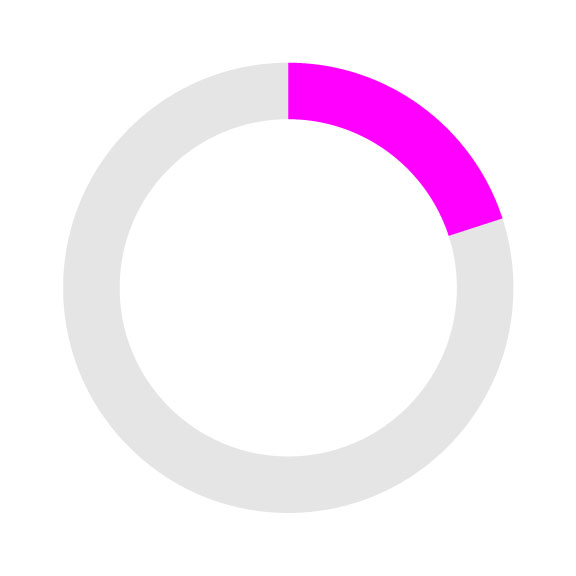
5 MINUTES: Learn more and join the conversation with Tami Wong and the Canadian Alopecia Areata Foundation by following them on Instagram: @hairlosspride @canaaf.
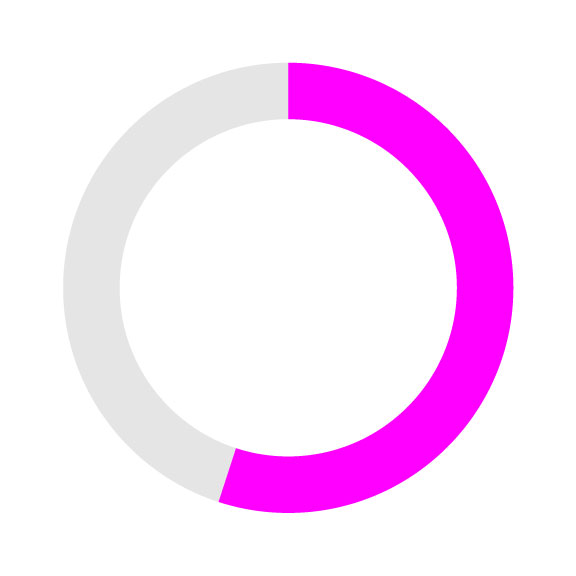
5 DOLLARS: Donate to Wigs for Kids https://wigsforkidsbc.com/ or The Canadian Alopecia Areata Foundation https://www.canaaf.org/
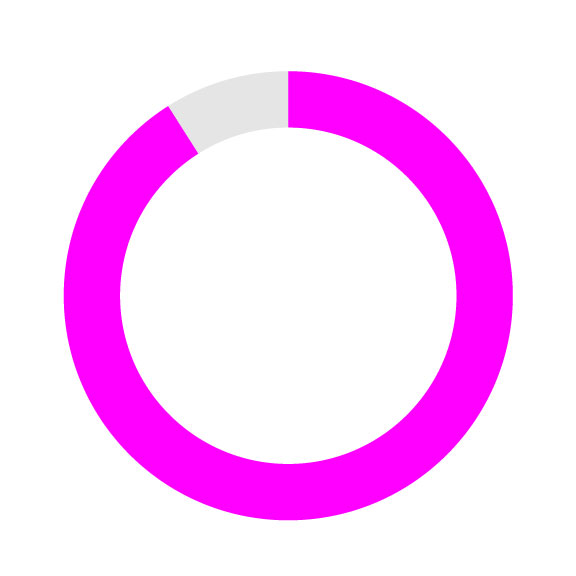
5 DAYS: Educate yourself about the different types of alopecia using resources like: Alopecia UK’s Types of Alopecia landing page. Ask your hairdresser or salon what they know about female hair loss and how they support clients. Start a conversation about female hair loss with friends and share the resources you’re exploring. Normalize these conversations so women know they’re not alone.
